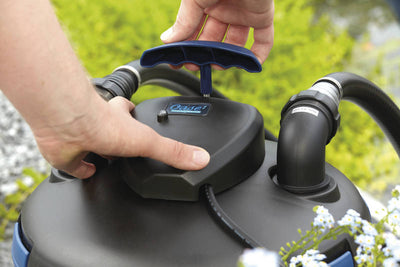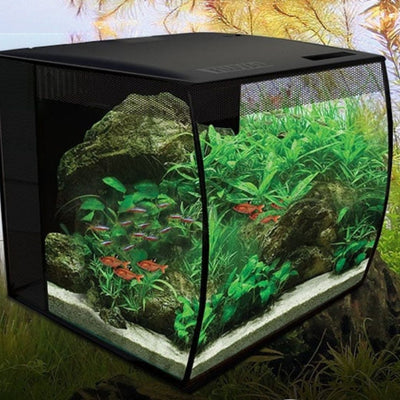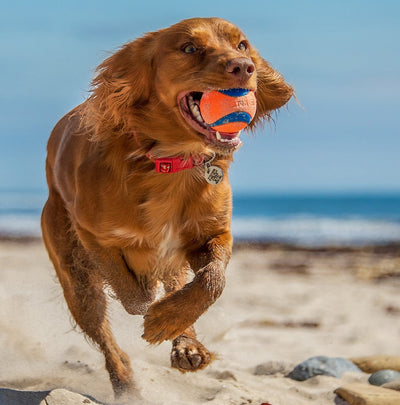
Yabbies, also known as freshwater crayfish or Marron, can make great pets for those interested in aquatic creatures. However, proper care is essential to ensure their health and happiness.
This guide will provide you with all the information you need to set up a suitable habitat, feed your yabbies, and keep them healthy and happy.
What is a Yabby?
Yabbies are a type of freshwater crustacean found in Australia, and they require a specific set of conditions to thrive.
Depending on where they're found, they may be called yabbies (Cherax destructor) in New South Wales and Victoria, Marron (Cherax teniumanus) in Western Australia, or Redclaw (Cherax quadricarinatus) in Queensland.
To ensure the health and happiness of your yabbies, it's important to provide them with a suitable habitat, proper nutrition, and regular maintenance.
It's important to know that the Cherax species is the only type of crayfish sold as pets in Australia.
Choose the right tank and habitat.
The first step in keeping yabbies as pets is to choose the right tank and habitat. If keeping more than one yabby, you will need a tank that is at least 60 litres in size such as the Horizon 60 aquarium, with plenty of hiding places and areas to explore. for one yabby, the Focus 36 aquarium would be suitable.
An aquarium makes an ideal set up for
your yabby. A substrate of sand or gravel is recommended, along with rocks, plants, and other decorations to create a natural environment. It's also important to provide a filter and heater to maintain water quality and temperature.
Set up the tank with the right substrate and decorations.
When setting up a tank for yabbies, it's important to choose the right substrate and decorations to create a comfortable and natural environment. Yabbies prefer a substrate of aquarium sand or gravel, which allows them to burrow and create their own hiding places. Decorative rocks, log hollows plants, and other decorations can also be added to create a more natural habitat and provide additional hiding places.
Just be sure to avoid any decorations with sharp edges or small parts that could be harmful to your yabbies.
Maintain the water quality and temperature.
Keeping the water quality and temperature consistent is crucial for the health and well-being of your yabbies. Yabbies are sensitive to changes in water chemistry and temperature, so it's important to monitor these factors regularly. Use a water testing kit to check the pH, ammonia, nitrite, and nitrate levels in the tank. The ideal temperature for yabbies is between 20-25°C (68-77°F), so use a heater to maintain a consistent temperature. Regular water changes and filter maintenance will also help keep the water quality in check.
Feed your yabbies a balanced diet.
Yabbies are omnivores and will eat a variety of foods, including vegetables, fruits, and protein sources like shrimp and fish. It's important to provide a balanced diet to ensure they get all the nutrients they need. Commercial yabby pellets can be a convenient option, but supplement their diet with fresh foods like spinach, carrots, and apples. Avoid overfeeding, as excess food can pollute the water and lead to health problems. Feed your yabbies once or twice a day, and remove any uneaten food after a few hours.
Monitor their behaviour and health regularly.
Keeping a close eye on your yabbies' behaviour and health is crucial to ensuring they are happy and healthy. Look out for any changes in their activity level, appetite, or appearance. If you notice any signs of illness or distress, such as lethargy, loss of appetite, or abnormal behaviour, take action immediately. Consult a veterinarian who specializes in aquatic animals if necessary.
Regular water changes and maintenance of their habitat can also help prevent health problems.
Temperament
If you're considering keeping yabbies as pets, it's important to keep in mind that they are territorial creatures with sharp claws. Overcrowding can lead to constant fighting, and other fish in the tank may become targets for the yabbies' opportunistic feeding habits.
To keep your yabbies happy and healthy, make sure they have plenty of space and a varied diet.
Feeding & Diet
Yabbies are primarily herbivores and are most active at night. Yabbies also need a varied diet of vegetables, protein, and calcium to stay healthy.
To keep them healthy, it's best to feed them a diet of . By providing your yabby with a balanced diet and proper care, you can enjoy a happy and healthy pet for years to come.
When it comes to feeding, it's better to give small quantities at a time rather than overfeeding.
One-to-two small pieces of food every two to three days is enough, and it's important to remove any leftover food after two hours to prevent the water from becoming polluted. Keep in mind that while yabbies can survive for months without eating, their growth and overall health may suffer if they aren't fed regularly.
Health
Yabbies can make great pets as long as their water quality and feeding needs are met. To keep them healthy, it's important to prevent cannibalism of dead or dying crayfish, as this can lead to a fatal disease known as porcelain disease or "white tail" disease.
are met. To keep them healthy, it's important to prevent cannibalism of dead or dying crayfish, as this can lead to a fatal disease known as porcelain disease or "white tail" disease.
Additionally, it's important to monitor their interactions with each other, especially after molting when their exoskeleton is soft and vulnerable to injury. If a yabby does pass away, it should be promptly removed from the tank to prevent any potential health issues for the remaining crustaceans.
Maintenance, Care and Lifespan of Yabbies
 Yabbies need adequate space and hiding structures. Each yabby should have at least a 40cm area to call their own, along with plenty of places to hide and feel secure. By creating a comfortable and stimulating environment for your yabbies, you can ensure they thrive as pets.
Yabbies need adequate space and hiding structures. Each yabby should have at least a 40cm area to call their own, along with plenty of places to hide and feel secure. By creating a comfortable and stimulating environment for your yabbies, you can ensure they thrive as pets.
Yabbies as pets, require very little maintenance and can live for 2-5 years.
While it's not necessary, it's a good idea to have aeration in their tank. However, it's important to note that under-gravel filters are not recommended as yabbies are burrowing creatures and can disrupt the filter's efficiency.
They can be quite the escape artists. To prevent any Houdini-like antics, make sure to provide a secure lid that fits properly on their tank. This will keep your yabbies safe and sound, and prevent any unexpected adventures outside of their habitat.
Maintaining the water temperature between 23°C and 28°C is ideal for yabbies. Additionally, it's important to regularly change the water in small quantities, with a total water change every two to three months. Keep in mind that marron are less tolerant of poor water quality compared to yabbies.
Yabbies prefer alkaline water with a pH between 7.5 and 10.5, and it's important to remove any chlorine before introducing them to their new home. Yabbies are especially sensitive to chlorinated water, so be sure to "age" the water before adding your new crustacean friend.
By following these guidelines, you can ensure that your yabbies stay healthy and happy in their new home.
© weknowpets 2023











